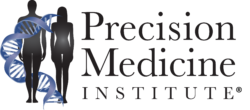Precision medicine breakthrough leads to MIT creating a database of the function of every gene humans have

Researchers at the Massachusetts Institute of Technology (MIT) Whitehead Institute credit their recent work for a new database of the function of every gene in the human genome. This advance in functional genomics could have significant implications for the future of precision medicine technology, as it may allow clinicians to better understand and predict the impact of genetic changes.
“It’s a big resource in the way the human genome is a big resource, in that you can go in and do discovery-based research,” said Jonathan Weissman, PhD, of the Weissman Lab, in an MIT press release. “Rather than defining ahead of time what biology you’re going to be looking at, you have this map of the genotype-phenotype relationships and you can go in and screen the database without having to do any experiments.” Weissman, who led the study, investigates how cells ensure that proteins fold into their correct shape, as well as the role of protein misfolding in disease and normal physiology.
An article published June 9 in Cell explains the Weissman team’s news in genetic science and single-cell CRISPR screening. Their new insights tying genes to their functions comes from a technique combining CRISPR technology and single-cell RNA sequencing readouts (Perturb-seq).
Is It Possible to Decode and Rewire Human Biology?
One way to explore the function of genes may be to disrupt their expression. Over the years, scientists have been experimenting with several approaches.
CRISPR technology, which continues to be tested in cells and animal models, and in research and clinical trials for a wide variety of diseases, according to the National Library of Medicine, allows researchers to precisely target specific genes.
The recent MIT project takes advantage of the Perturb-seq approach that “makes it possible to follow the impact of turning on or off genes with unprecedented depth,” stated MIT News, and along several paths, including:
- Exploring cellular effects of genes with unknown functions.
- Investigating the response of mitochondria to stress.
- Screening for genes that cause chromosomes to be lost or gained.
“The Perturb-seq method uses CRISPR-Cas9 genome editing to introduce genetic changes into cells, and then uses single-cell RNA sequencing to capture information about the RNAs that are expressed resulting from a given genetic change,” continued MIT news. “Because RNAs control all aspects of how cells behave, this method can help decode the many cellular effects of genetic changes.”
What distinguishes this research is the method’s targeting capabilities, according to the researchers. Other similar experiments rely on methods that affect multiple cells, with the results then averaged together. Weissman explained.
“We often take all the cells where ‘gene X’ is knocked down, and average them together to look at how they changed,” Weissman said. “But sometimes when you knock down a gene, different cells that are losing that same gene behave differently, and that behavior may be missed by the average.” The Perturb-seq approach used by Weissman’s lab may avoid this potential problem.
Using Perturb-Seq to Gain Insights into Aneuploidy
Functional genomics and CRISPR-Cas9 technology have been intertwined in research for several years. The new dataset developed by the MIT team is already yielding interesting insights, helping to discover the function of genes that were previously not known, and showing relationships between genes in addition to showing their function.
One application of this technology is aneuploidy, a condition in which too many or too few copies of chromosomes are made. This condition is difficult to study using methods that rely on a group of cells but is easier to examine using genetics from a single cell.
“I think the aneuploidy study is the most interesting application of this data so far,” observed Tom Norman, PhD, a co-senior author of the mapping study. “It captures a phenotype that you can only get using a single-cell readout. You can’t go after it any other way.”
The researchers found that a subset of genes whose removal led to different outcomes from cell to cell were responsible for chromosome segregation. Their removal was causing cells to lose a chromosome or pick up an extra one, stated MIT News toward the related article in Cell, titled, “Mapping Information-Rich Genotype-Phenotype Landscapes With Genome-Scale Perturb-Seq.”
Watch for More Gene Mapping
As many molecular biologists and pathologists know, identifying the effects of individual genes has long been a goal in precision medicine research. Other studies are focusing on mapping specific genes or sets of genes in the context of disease conditions.
In another example, recent research at the University of Arizona has targeted the genetic underpinnings of schizophrenia. In a paper published in Nature in early April, researchers identified more than 280 different genes they believe to be connected to the development of schizophrenia.
“We identify biological processes relevant to schizophrenia pathophysiology; show convergence of common and rare variant associations in schizophrenia and neurodevelopmental disorders; and provide a resource of prioritized genes and variants to advance mechanistic studies,” stated the authors of the related article, “Mapping Genomic Loci Implicates Genes and Synaptic Biology in Schizophrenia.”
Both the MIT and University of Arizona research datasets are promising in their potential ability to quickly prioritize genes and variants. Ultimately, these and other such datasets developed worldwide will be used to advance precision medicine programs.
Hospital and health system CEOs and administrators will want to monitor progress in gene mapping and gene editing, and how they are advancing in research settings. In time, these developments may drive innovations in clinical laboratory diagnostics and precision medicine treatments. In addition, evidence of accuracy, safety, and reliability, as well as further research confirming the value of these approaches will develop the foundation for early adopters who seek to distinguish their organizations for state-of-the-art precision medicine services.
—Caleb Williams
Related Information:
Mapping Information-Rich Genotype-Phenotype Landscapes With Genome-Scale Perturb-Seq
New CRISPR-Based Map Ties Every Human Gene to Its Function
Mapping Genomic Loci Implicates Genes and Synaptic Biology in Schizophrenia
